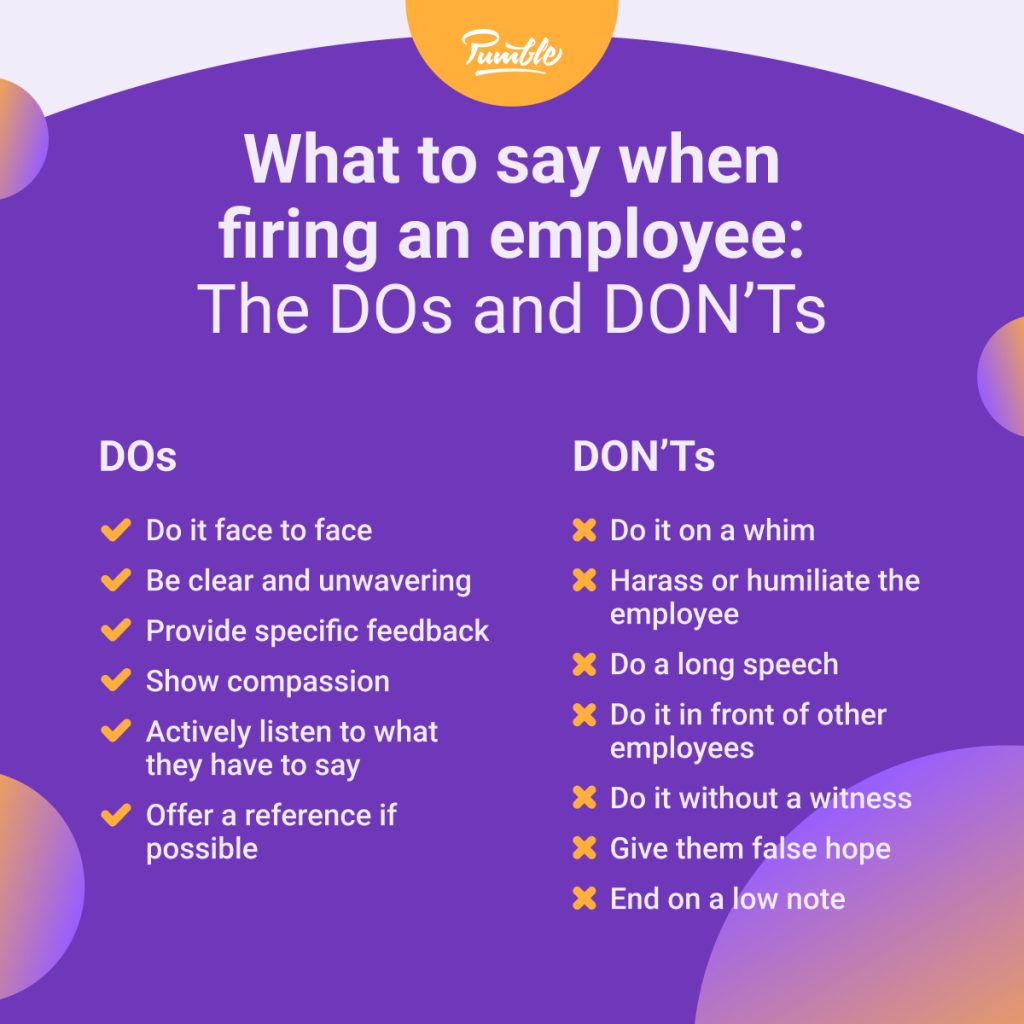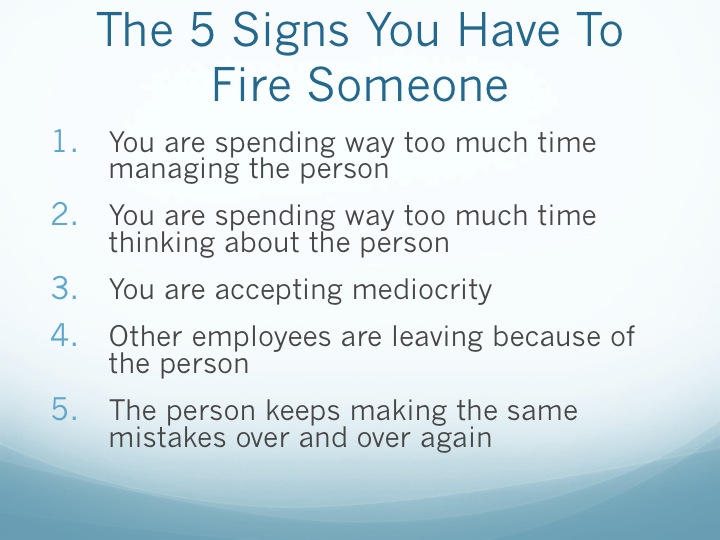Do You Have To Fire Someone In Person

The weight of delivering bad news hangs heavy, especially when that news involves someone's livelihood. The question of whether a firing should always be conducted face-to-face has become a fraught topic in modern workplaces, complicated by remote work realities and evolving ethical considerations. As companies navigate downsizing and restructuring, the method of delivering this impactful message is under intense scrutiny.
The core debate centers around empathy versus efficiency. The question isn't just about legal compliance, but also the moral implications of ending someone's employment. This article delves into the legal precedents, ethical arguments, and practical considerations surrounding the termination process, exploring whether firing someone in person remains a universally accepted best practice or if alternative approaches can be both humane and effective.
The Case for In-Person Terminations
Traditional HR practices strongly favor in-person terminations. The argument rests on providing employees with the opportunity to ask questions, receive immediate clarification on severance packages and benefits, and maintain a sense of dignity during a difficult moment.
According to a 2021 SHRM (Society for Human Resource Management) study, while not explicitly mandating in-person terminations, 78% of HR professionals believed it was the most respectful approach, barring extenuating circumstances. The study highlighted that a face-to-face conversation allows for a more nuanced and empathetic delivery, reducing the risk of misinterpretation and fostering a sense of closure.
"Delivering difficult news in person allows for human connection and the opportunity to address immediate concerns," says Dr. Emily Carter, a professor of organizational psychology at the University of California, Berkeley. She adds, "It signals respect for the employee's contributions and allows for a more controlled and supportive environment, even in a negative situation."
The Rise of Remote Terminations
The COVID-19 pandemic drastically altered workplace norms, including the termination process. With many employees working remotely, companies were forced to adapt, leading to an increase in terminations conducted via video conferencing or phone calls.
While some argue that remote terminations are a necessary adaptation to the modern workplace, others raise concerns about the potential for dehumanization and lack of emotional support. Legal experts caution that while not inherently illegal, remote terminations can increase the risk of legal challenges if not handled carefully. Proper documentation, clear communication, and adherence to company policy are crucial.
A recent survey by Gartner found that 35% of companies have conducted terminations via video conference since the start of the pandemic. However, the survey also revealed that employee satisfaction with the termination process was significantly lower in remote terminations compared to in-person ones.
Legal Considerations and Best Practices
The legality of firing someone remotely largely depends on local labor laws and company policy. In most jurisdictions, there is no legal requirement to terminate an employee in person.
However, employers must ensure that the termination process complies with anti-discrimination laws and that the employee receives all required notices and documentation, regardless of the delivery method. According to employment lawyer, David Miller, "The key is consistent application of company policy and thorough documentation of the reasons for termination to mitigate legal risk."
To minimize potential legal issues, companies should provide clear and concise reasons for the termination, offer a fair severance package, and ensure the employee has access to resources such as outplacement services.
Ethical Considerations
Beyond legal compliance, the ethical implications of how someone is fired are paramount. Treating employees with respect and dignity, even in termination situations, can significantly impact a company's reputation and employee morale.
Many HR professionals believe that a combination of approaches is often the most ethical. For example, delivering the initial news remotely, followed by an in-person meeting to discuss details and provide support. This allows for a more personalized and empathetic experience, even in a remote-first environment.
"The method of termination reflects a company's values," says Sarah Jones, a workplace ethics consultant. "A rushed or impersonal termination can damage employee trust and create a negative perception of the company, both internally and externally."
Moving Forward: A Hybrid Approach?
The debate over in-person versus remote terminations is likely to continue as workplaces evolve. A hybrid approach, combining the benefits of both methods, may emerge as the most effective and ethical solution.
Companies could consider offering employees the option of an in-person or remote termination, depending on their preference and circumstances. This approach demonstrates respect for individual needs and allows for a more personalized experience.
Ultimately, the decision of how to fire someone should be guided by a commitment to fairness, transparency, and respect. By prioritizing empathy and clear communication, companies can navigate difficult terminations in a way that minimizes harm and protects both the employee and the organization.





.jpg)












